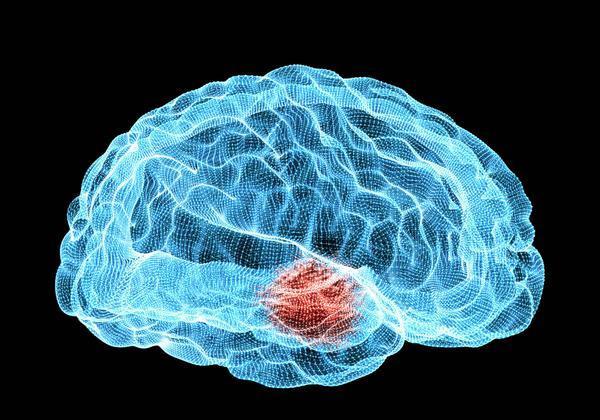A blood clot is a solid mass in a blood vessel that is made of blood, or by the components of blood. Whether in veins, arteries, or capillaries, blood clots may occur.
If a blood clot enters a cerebral artery, a cerebral thrombus is formed, resulting in a decrease in local blood flow to the brain or interruption of blood supply, and a series of uncomfortable symptoms of brain tissue due to ischemia, necrosis and lack of oxygen.
If not treated early, it can even lead to serious threats to the patient's life. Therefore, in daily life, once a blood clot in the brain is found, it must be treated as soon as possible.
So, when there is a blood clot in the brain, what are the specific symptoms of the body?

What are the symptoms of cerebral thrombosis?
1. Repeated head discomfort
If a blood clot appears in an artery, it will reduce the amount of blood flowing to the brain, resulting in insufficient blood supply to the brain.
Once the lack of blood supply to the brain will lead to a more obvious lack of oxygen in the brain, then the patient will have a series of head discomfort symptoms, such as dizziness, in daily life.
Especially when patients just wake up every morning, the probability of dizziness will be very high. Repeated dizziness can also occur when the patient is bathing or physically tired.
If dizziness occurs frequently in a day, such as more than 5 times a day, the probability of cerebral infarction or cerebral hemorrhage increases.
In addition to the symptoms of dizziness, due to the poor blood flow in the brain, some brain cell metabolites cannot be taken away in time and will accumulate excessively locally.
These metabolites will stimulate the cerebral blood vessels and cause abnormal spasms of cerebral blood vessels, which will cause headaches in patients.
Headaches caused by cerebral thrombosis are generally more serious, and there may even be severe headaches. And when you have a headache, it can be accompanied by vomiting, nausea, or dizziness.
2. Abnormal vision
After the appearance of a blood clot in the brain, the optic nerve is compressed, which can lead to some vision changes in the patient.
For example, the patient's vision will decline in a short period of time, the vision will be blurred or the vision will be doubled, and some patients will show the phenomenon of transitioning the eyes to one side.
In addition, many patients will suddenly appear in front of the eyes of the black, generally within a few seconds will recover on their own.
If this phenomenon occurs more frequently, accompanied by dizziness and vomiting, then it must cause a high degree of vigilance, most likely related to the occurrence of stroke.
Third, the body and face are numb and stiff
Cerebral artery blood flow is not smooth, will cause brain cells and some nerves to be damaged, once the sensory and motor nerve function is abnormal, the patient's body and face will appear numb, stiff and a series of uncomfortable symptoms.
In particular, on the left side of the hands and feet and the upper and lower limbs, there will be a more obvious numbness, or there will be walking weakness.
If the situation is serious, the patient's face will also have a corresponding numbness, the tongue will become more stupid, and even the phenomenon of unclear speech or unconscious drooling will occur.
All in all, if the above three symptoms appear in daily life, it is generally related to the appearance of blood clots in the brain. Then the patient must go to the regular hospital for treatment at the first time, and then give the corresponding treatment under the guidance of the doctor.
And do a good job of daily diet, schedule and mentality adjustments. During treatment and recovery, regular follow-ups should also be carried out. Once abnormalities occur, they need to be admitted to the hospital for formal treatment in order to maximize the health of patients.